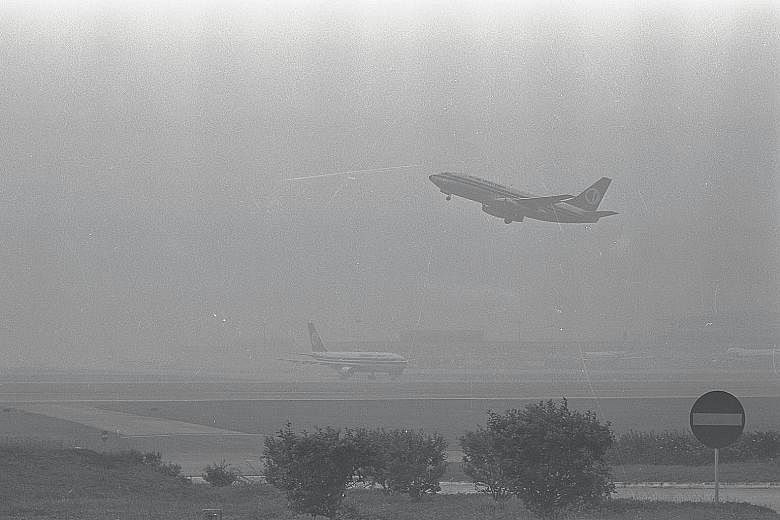Singapore has been plagued by haze since the 1970s, and it is unrealistic to think that the problem can be solved in three years, as Indonesian President Joko Widodo has predicted, experts told The Straits Times.
While some of the measures he put in place may help alleviate the situation, broad changes must happen both on the ground and at the government level there to have a real impact.
Said Professor Euston Quah, head of Nanyang Technological University's Department of Economics: "It will certainly take more than three years to greatly reduce the fire episodes."
Among other things, laws need to be changed and greater coordination is required among various government institutions, he said.
And National University of Singapore law professor Alan Tan noted that the problem was not just about companies setting fires, but hinged on the unfair parcelling of land.
"There is a deeper problem of land use inequity affecting local communities whose lands are taken by the companies, often with the collusion of corrupt officials. This results in villagers encroaching into plantation lands, and both sides use fires indiscriminately for their own ends," he said. "This aspect of the problem cannot realistically be solved in a matter of a few years. It must involve fundamental reform of land use policies."
Prof Tan stressed that there is no way to ban fires altogether, as it remains the fastest and cheapest way to clear land in an agrarian economy like Indonesia.
"The goal should be to ensure controlled burning, and this must take into account complexities like weather patterns, peat lands, land use disputes, local government autonomy and corrupt local officials."
Records show that the haze has plagued Singapore as far back as 43 years ago.
On Oct 18, 1972, a Straits Times article headlined "Persistent haze" warned Singaporeans to prepare for several more weeks of haze discomfort caused by extensive fires in Sumatra and Indonesia Borneo. Shocked citizens had then said they were suffocating in their flats.
An earlier article that month had reported that a "heavy dust haze enveloped large area of Singapore", affecting thousands of commuters.
That was to be the first of many similar experiences.
The haze has shrouded the island time and again, and now, Singapore is bracing itself for what could be its worst prolonged spell of haze to date.
Scientists have warned that this year's episode could be as bad as or even worse than 1997's conditions - widely regarded as the most serious haze event on record. That year, the haze lasted three months and cost Singapore an estimated US$163 million (S$232 million).
This year, it has so far stretched for 11/2 months, with no respite in sight.
Dr Erik Velasco, a research scientist from the Singapore-MIT Alliance for Research and Technology, said: "If it is true that the current conditions are tracking those experienced in 1997, we should be prepared for a longer period of haze, with levels similar to those experienced during the last three weeks."
• Additional reporting by Seow Bei Yi and Lee Min Kok



